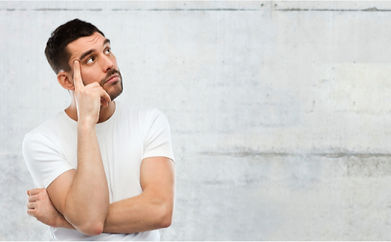
Patterns of Chronicity
In any process of change, whether it’s personal growth, therapy, or emotional processing, there are moments when progress seems to stall. Within IEMT (Integral Eye Movement Therapy), there are five common patterns that often explain this sense of stuckness.
These are known as the patterns of chronicity. They are usually not conscious strategies, but rather automatic ways in which a person, often out of self-protection, unconsciously holds on to a familiar internal reality.
The desire for change is there, but the movement simply doesn’t happen.
By recognising these patterns and working with them within an IEMT process, space opens up for genuine and sustainable transformation.
Repetition of recurring behavior

The Three Stages of Emotional Escalation
One of the chronic patterns we often observe in IEMT is what we call the “three-stage pattern of emotional escalation”. This is a usually unconscious process where a person moves through three phases of increasing emotional intensity in an attempt to influence or control their environment.
It can sound like: “You don’t want to make me angry.” The underlying message is: “If you threaten my familiar reality by asking me to change, I’ll react emotionally, and that reaction should stop you from pushing forward.”
In a therapeutic setting, this often shows up when change feels threatening. The client may consciously want relief from their issue, but unconsciously resist any shift in the beliefs or identity structures that support the problem. They want to feel better, but without needing to change anything fundamental about how they see themselves or the world.
This pattern isn’t manipulative in the intentional sense. Like the other chronicity patterns in IEMT, it’s an unconscious response designed to protect a known and familiar state of being.
The Great Big “What if…” Question
Sometimes a single objection is enough to derail the entire process of change. The “what if…” question is a classic example where someone presents a hypothetical situation in which the proposed solution wouldn’t work, and uses that as a reason to dismiss the approach entirely.
Ironically, this one exception is treated as proof that the entire idea is flawed. It’s a way to sidestep the process without ever truly testing its potential.
In short: A person uses a hypothetical counterexample to dismiss change, avoiding any real engagement with the process.


The “Maybe Man” Phenomenon
The “Maybe Man” speaks in vague terms, uncertainty, and imprecise language. Without clarity about what the problem actually is, or what identity or belief sits beneath it there’s no real starting point for effective change.
They remain in a grey zone, avoiding commitment to a specific experience or belief. And without precision, therapy becomes a guessing game rather than a targeted intervention.
A helpful metaphor: Imagine a map without the “You are here” marker. Without knowing your current position, the map is not just unhelpful, it’s misleading.
In short: A person avoids defining their problem clearly, which makes meaningful therapeutic change nearly impossible.
Testing for the Existence of the Problem (Rather Than for Change)
Even if there’s 99% improvement, the remaining 1% can become the sole focus. For someone in this pattern, any trace of the issue is seen as proof that nothing has changed.
This is a form of black-and-white thinking. The problem is either “fixed” or “still there” with no room for progress, nuance, or grey areas. Labels like “I’m just like this” often reinforce this rigid mindset.
In short: A person improves but fixates on what’s still not working, and uses it as evidence that therapy didn’t work.


Being “At Effect” Rather Than “At Cause”
When someone is “at effect”, they experience their emotional struggles as something that happens to them, not something they have any role in. This leads to a passive approach: “Fix this for me.”
In contrast, someone who is “at cause” recognises their part in the process, and actively participates in creating change. They don’t just want help, they want to transform.
In short: A person doesn’t see their role in the problem, and expects change to happen from the outside which limits their progress.





